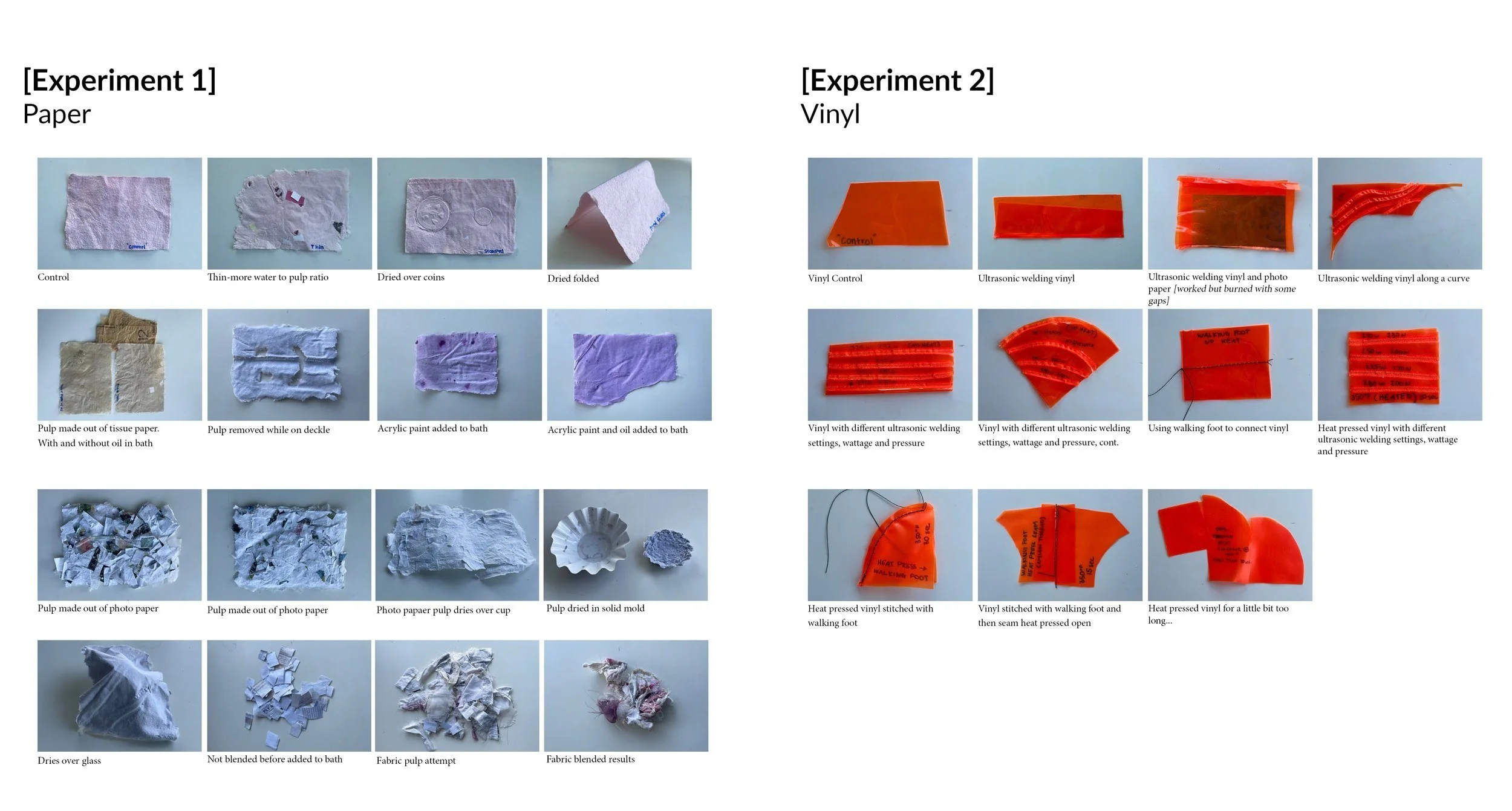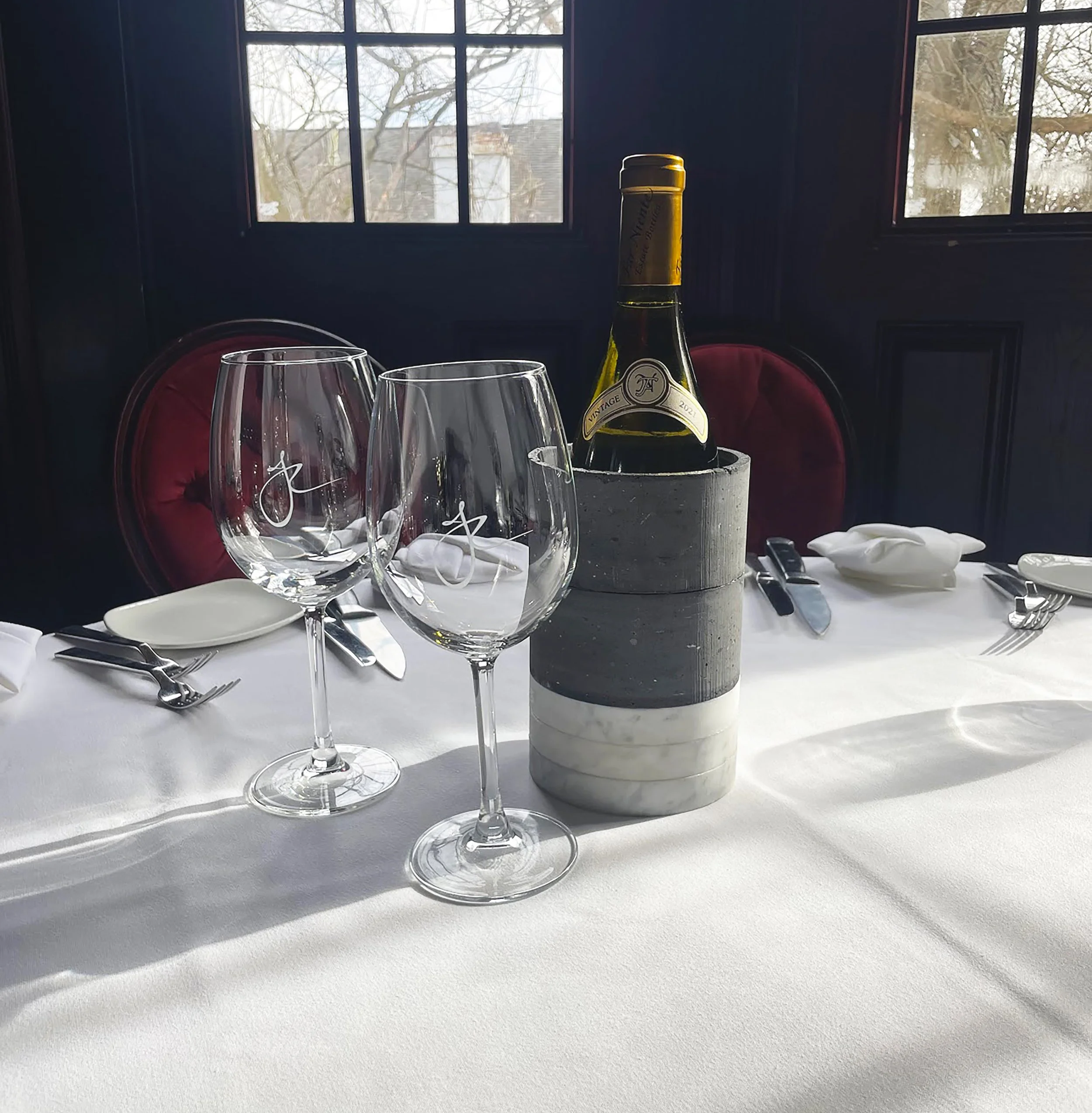Studio [Ritual of Making]:
“This semester will focus on making for making’s sake in an effort to deepen our connection with materials, our abilities to affect them, and their abilities to affect us. We will take time to investigate everything from the harvesting of materials, to the preparation of tools, to the honing of skills and their subsequent application.
Students will take on a making oriented ritual of their choice, with the aspiration of designing an object or suite of objects which that either engages, empowers, leverages, or is born out of said ritual.
[Product inspired by material]:
For my initial material explorations I focused on making paper from scratch by making a pulp from recycled paper. I changed and added different variable to this process to explore different possibilities.
I also leaned about fabricating synthetic textiles using an ultrasonic welder. With the machine I could control different pressure and heat variables.
Ultimately I found this method somewhat uninspiring. While these material explorations were interesting and informative, they did not inspire a product.
[Material inspired by product]:
I had a product in mind during this next phase. I knew I wanted to create wine chiller our of different materials with thermal properties.
Ultimately there are three different ways to create a hole, which at its core, what a wine chiller is. The hole can be cut out and subtracted from a certain material, a material can be casted into a mold considering the negative space, or material can be built around a circle to make up a hollow structure. These three methods dictated my materials and construction methods moving forward.
[White Wine]
Not all wines should be chilled to the same temperature because of their chemical composition. The backbone of a white wine is acidity. Thus, temperature can mute or accentuate a wine, based on its components.
White, Rosé and Sparkling Wine: Whites need a chill to lift delicate aromas and acidity. However, when they’re too cold, flavors become muted. Like reds, fuller-bodied wines like Chardonnay from Burgundy and California shine between 50°F and 60°F. Dessert wines like Sauternes fall into the same range.
[Chilling Wine]
Any of various devices or receptacles for chilling a bottle and its contents or for keeping them cool; especially a wine cooler, or a refrigerator for bottles.
[Cutting]
subtracting material to create a hole
[Casting]
casting a material into a mold
[Building]
building material around a hole
[Cutting]
I was fortunate enough to have access to a water jet machine. I found a few different stones: a lava/coral rock, limestone, fire brick, and marble. using the water jet, I subtracted material from each stone.
[Casting]
I continued on to casting. I created different mold with PVC pipping and poured concrete into my mold. I experimented with texturing and dying the concrete.
[Building]
For building I found that without the precision of machine cutting or the constraint of a mold, I had the least amount of control with these materials. I braised steel tubing, poured plaster, and used the ultrasonic welder to create vinyl ice packs that resembles the shape of a wine chiller.
After creating these wine chillers, I ranked each one on two different scales: efficiency of cooling and keeping wine cool and how much control I had over the materials when creating these different chillers.












